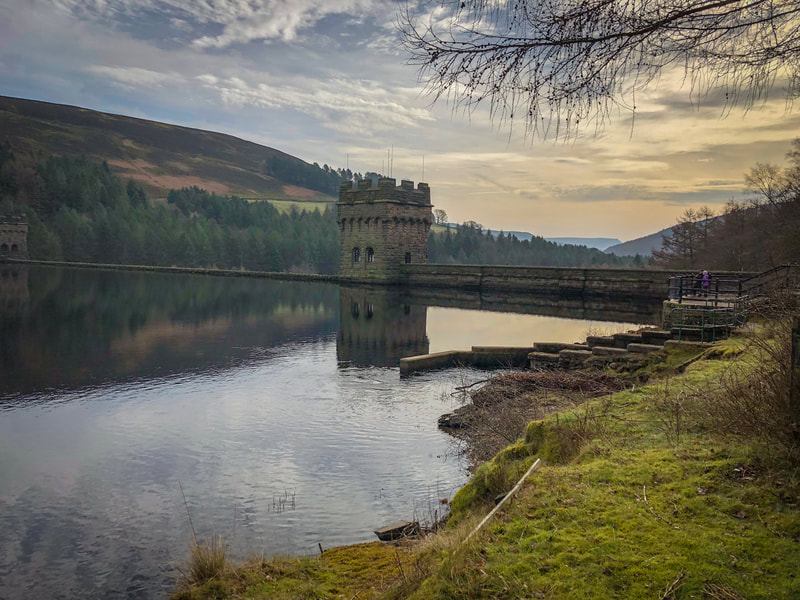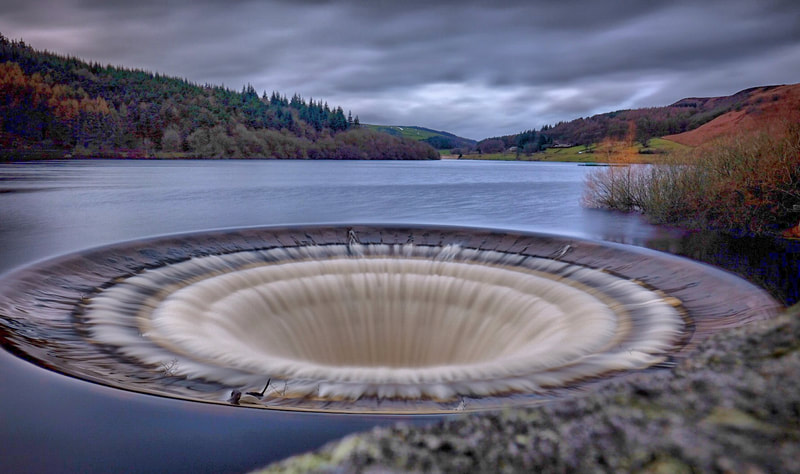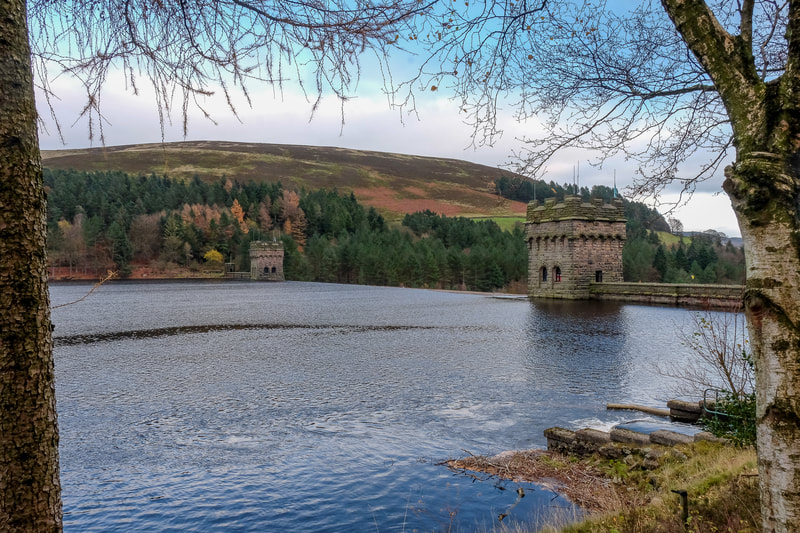Derwent Dam, nestled in the heart of the Peak District National Park in Derbyshire, England, is an iconic structure that holds both historical and cultural significance. Built between 1902 and 1916, Derwent Dam forms part of the Derwent Valley reservoir system, which was constructed to supply water to the cities of Derby, Nottingham, and Leicester.
The construction of Derwent Dam was driven by the growing demand for water in industrialized cities during the early 20th century. Designed by engineer Edward Sandeman, the dam was built using locally sourced stone and concrete, and its construction employed innovative engineering techniques for the time.
The primary purpose of Derwent Dam, along with the adjacent Howden Dam and Ladybower Dam downstream, was to regulate the flow of water from the River Derwent and its tributaries, ensuring a steady water supply for industrial and domestic use downstream.
Derwent Dam gained international fame during World War II when it became the target of Operation Chastise, famously known as the Dambusters Raid. On the night of May 16-17, 1943, a squadron of Lancaster bombers from the Royal Air Force's 617 Squadron, led by Wing Commander Guy Gibson, launched a daring raid to breach several dams in the Ruhr Valley in Germany.
The Möhne and Edersee Dams were successfully breached during the raid, resulting in catastrophic flooding and significant damage to German industrial infrastructure. Although the attack on Derwent Dam was less successful, it nonetheless showcased the bravery and ingenuity of the RAF pilots and forever linked Derwent Dam to one of the most daring military operations of World War II.
Derwent Dam has since become a symbol of British resilience and innovation, immortalized in literature, film, and popular culture. The story of the Dambusters Raid has been retold in numerous books, documentaries, and films, including the iconic 1955 film "The Dam Busters," which brought the heroic exploits of the RAF pilots to a global audience.
Today, Derwent Dam and its surrounding reservoirs are popular destinations for outdoor enthusiasts, offering opportunities for hiking, cycling, birdwatching, and water sports amidst the stunning landscapes of the Peak District. Visitors can explore the picturesque trails that wind along the reservoirs, take in breathtaking views of the surrounding countryside, and learn about the dam's history and significance at nearby visitor centers and museums.
Efforts to preserve and protect Derwent Dam for future generations are ongoing, guided by a commitment to environmental stewardship and historical preservation. The dam and its surrounding landscapes are designated as Sites of Special Scientific Interest (SSSI), recognizing their ecological importance and biodiversity.
From its humble beginnings as a water supply infrastructure to its pivotal role in one of the most daring military operations of World War II, Derwent Dam continues to captivate the imagination and inspire awe in all who encounter its majestic presence amidst the rugged landscapes of the Peak District.
The construction of Derwent Dam was driven by the growing demand for water in industrialized cities during the early 20th century. Designed by engineer Edward Sandeman, the dam was built using locally sourced stone and concrete, and its construction employed innovative engineering techniques for the time.
The primary purpose of Derwent Dam, along with the adjacent Howden Dam and Ladybower Dam downstream, was to regulate the flow of water from the River Derwent and its tributaries, ensuring a steady water supply for industrial and domestic use downstream.
Derwent Dam gained international fame during World War II when it became the target of Operation Chastise, famously known as the Dambusters Raid. On the night of May 16-17, 1943, a squadron of Lancaster bombers from the Royal Air Force's 617 Squadron, led by Wing Commander Guy Gibson, launched a daring raid to breach several dams in the Ruhr Valley in Germany.
The Möhne and Edersee Dams were successfully breached during the raid, resulting in catastrophic flooding and significant damage to German industrial infrastructure. Although the attack on Derwent Dam was less successful, it nonetheless showcased the bravery and ingenuity of the RAF pilots and forever linked Derwent Dam to one of the most daring military operations of World War II.
Derwent Dam has since become a symbol of British resilience and innovation, immortalized in literature, film, and popular culture. The story of the Dambusters Raid has been retold in numerous books, documentaries, and films, including the iconic 1955 film "The Dam Busters," which brought the heroic exploits of the RAF pilots to a global audience.
Today, Derwent Dam and its surrounding reservoirs are popular destinations for outdoor enthusiasts, offering opportunities for hiking, cycling, birdwatching, and water sports amidst the stunning landscapes of the Peak District. Visitors can explore the picturesque trails that wind along the reservoirs, take in breathtaking views of the surrounding countryside, and learn about the dam's history and significance at nearby visitor centers and museums.
Efforts to preserve and protect Derwent Dam for future generations are ongoing, guided by a commitment to environmental stewardship and historical preservation. The dam and its surrounding landscapes are designated as Sites of Special Scientific Interest (SSSI), recognizing their ecological importance and biodiversity.
From its humble beginnings as a water supply infrastructure to its pivotal role in one of the most daring military operations of World War II, Derwent Dam continues to captivate the imagination and inspire awe in all who encounter its majestic presence amidst the rugged landscapes of the Peak District.












